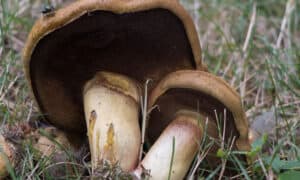While strolling through a meadow, field, or forest, you may come across lifeforms that prompt a double-take. Was that a little cluster of flowers you’ve walked by, or tiny mushrooms with daisy-like caps? Is that fleshy star-like form flower or fungus? In nature, mimics are everywhere. Some are so skilled in their art form of disguise that close scrutiny is needed to determine what we’re looking at. Others share more superficial resemblances.
In this guide, we’ll delve into five delightful species of mushrooms that look like flowers.
Read on to learn more.
1. Pleated Inkcap (Parasola plicatilis)
The pleated inkcap (Parasola plicatilis) is a delicate little mushroom widely occurring across North America and Europe. In the summer or early fall, if you take a stroll through a meadow, you might initially mistake mature specimens for small, fragile flowers. The pleated appearance of an upturned cap especially lends this mushroom to look like a flower with fine, ray-shaped petals.
The cap color tends to change from a light tan to blue-gray as it ages. The fine, prominent radial grooves run almost to the center of the cap. The cap center is much darker, adding to the image of a daisy-like flower head. The fragile little mushroom cap only reaches up to 35mm across.

This fragile mushroom shares some characteristics with a delicate flower.
©Wirestock Creators/Shutterstock.com
2. Mushrooms That Look Like Flowers: Daisy Earthstar (Geastrum floriforme)
The daisy earthstar (Geastrum floriforme) belongs to the Geastraceae family of mushrooms known as earthstars. The daisy earthstar exists across central and southern Europe and parts of North America. Its range is currently not well known, but it does appear to have a preference for coastal environments.
Like many other earthstars, the Geastrum floriforme looks similar to some carrion flowers. This mushroom grows basally on the soil and features thick, petal-like golden-brown rays and a central cream-colored spore sac. As the mushroom grows, its outer protective layer (exoperidium) expands and breaks into 5-10 separate rays.
Interestingly, the rays of the daisy earthstar can expand or close around the spore sac in response to changes in air humidity. This hygroscopic ability does not occur in the majority of other earthstars. In contrast, they remain in an open position at maturity and do not respond to changes in humidity.
You can find this interesting mushroom growing solitarily or in scattered groups in open, sandy areas under conifer or hardwood trees.
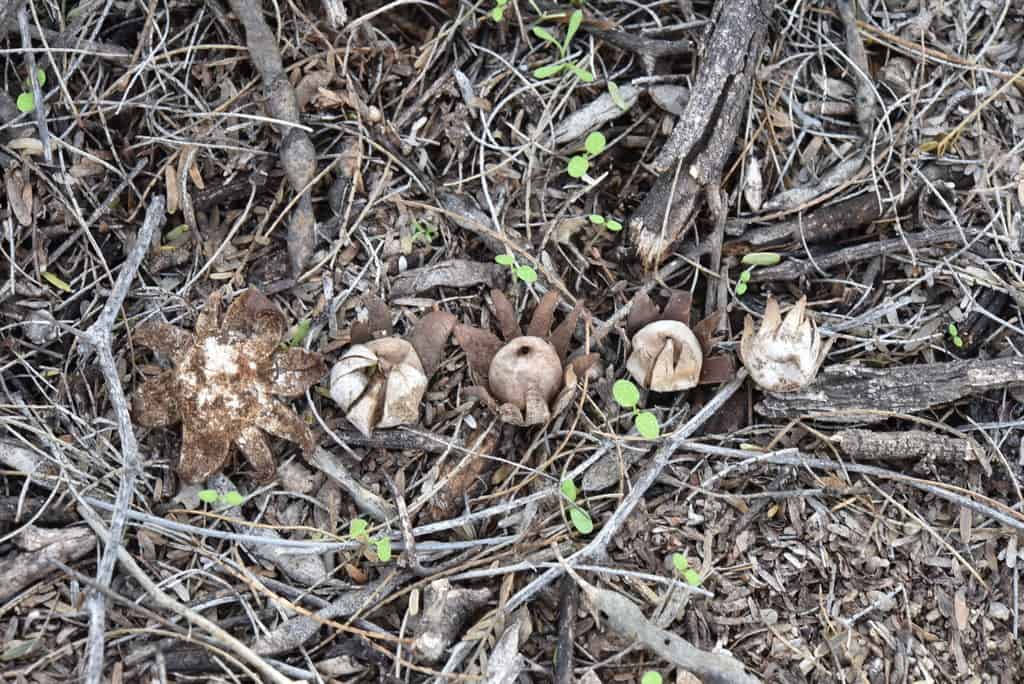
specimens placed in a line.
©Alan Rockefeller / CC BY 4.0 / https://www.inaturalist.org/photos/6369496 – License
3. Mushrooms That Look Like Flowers: Starfish Fungus (Aseroe rubra)
Also known as the anemone stinkhorn, the starfish fungus (Aseroe rubra) is currently a member of the stinkhorn family, Phallaceae, although some mycologists place it in the Clathraceae family. In addition to resembling the animals of its common names, the starfish fungus also resembles some carrion flowers and the flowers of the parasitic plant, Hydnora africana.
This fascinating fungus occurs in tropical and subtropical regions. In the U.S., it is most common in Hawaii and the Southeast. The starfish fungus also commonly occurs in Australia, New Zealand, and southern regions of Africa.
Aseroe rubra looks most like the above-mentioned plants when fully mature. At this stage, the mushroom is fully open, revealing its strangely beautiful form. It features 5-7 pink-orange fleshy rays. The center is sometimes hollow, which increases its appearance of some carrion flowers and Hydnora africana.
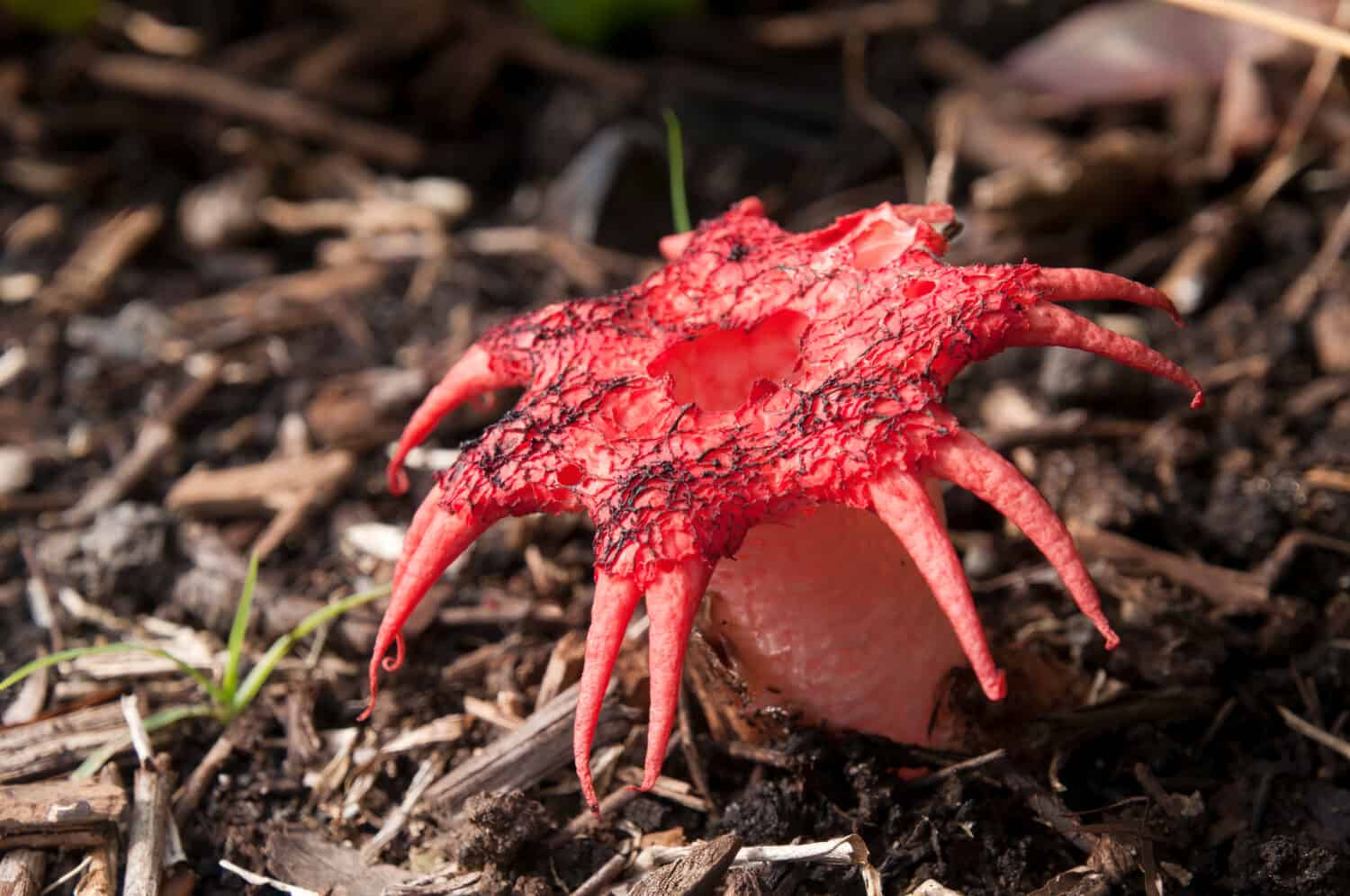
This beautiful but smelly mushroom is thought to have been imported to England in the early 1800’s.
©demamiel62/Shutterstock.com
4. Texas Star Mushroom (Chorioactis Geaster)
The quite rare mushroom, Texas star mushroom (Chorioactis Geaster) is currently only known to occur in a few counties in Texas, Oklahoma, and one prefecture in Japan. The genus, Choriactic, contains only this single species.
Not only is this mushroom extremely rare, but it’s also unique in appearance. When immature, the mushroom is shaped like a dark brown, fuzzy egg. As it matures, it opens and expands, producing 3-6 tan-colored rays. In its mature form, this mushroom looks similar to the carrion flower of the succulent, Stapelia gigantea.
The relatively rare Texas star mushroom grows on the decaying wood of cedar elm. They fruit from October through January.
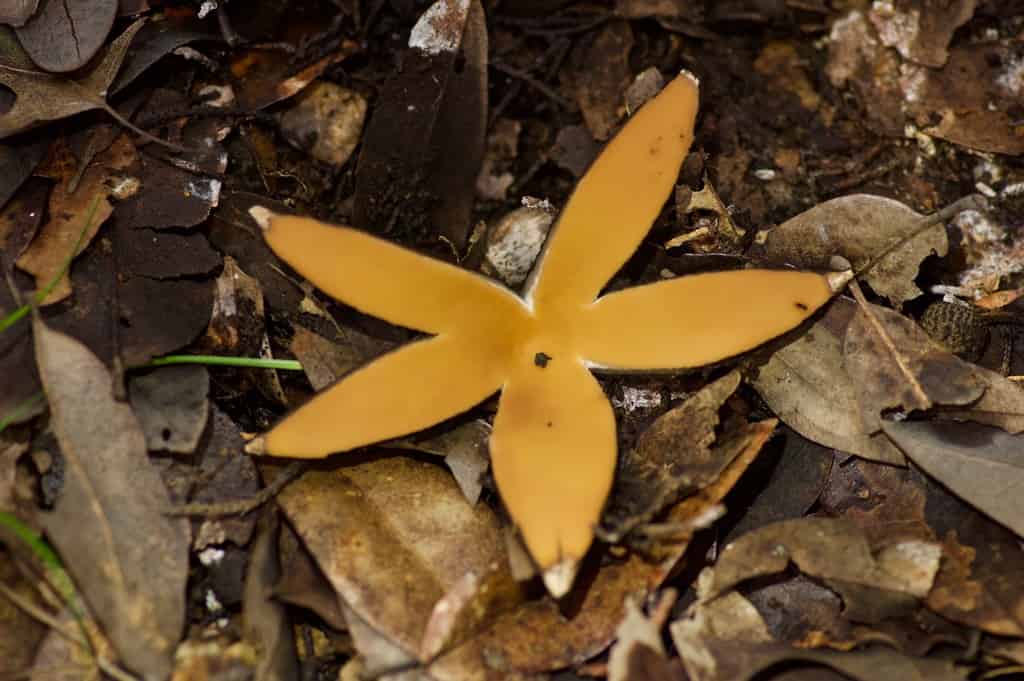
This beautiful mushroom can resemble a star or a flower to some.
©pufferchung / CC BY 4.0 / https://www.inaturalist.org/photos/26978169 – License
5. Fragile Dapperling (Leucocoprinus fragilissimus)
The fragile dapperling (Leucocoprinus fragilissimus) is a tiny species of gilled mushroom in the Agaricaceae family. It occurs alone or in scattered groups along the forest floor in the southeastern U.S. and Costa Rica.
This mushroom features a cap with extremely thin and fragile flesh connected to an exceedingly fragile stipe. When mature, the cap is flat with slightly upturned margins. Fine, deep grooves that radiate outward from the center cover the cap, resembling tiny ray-like petals. The center of the cap features a small central bump and is much darker than the rest of the yellow to off-white cap, contributing to the flower-like appearance.
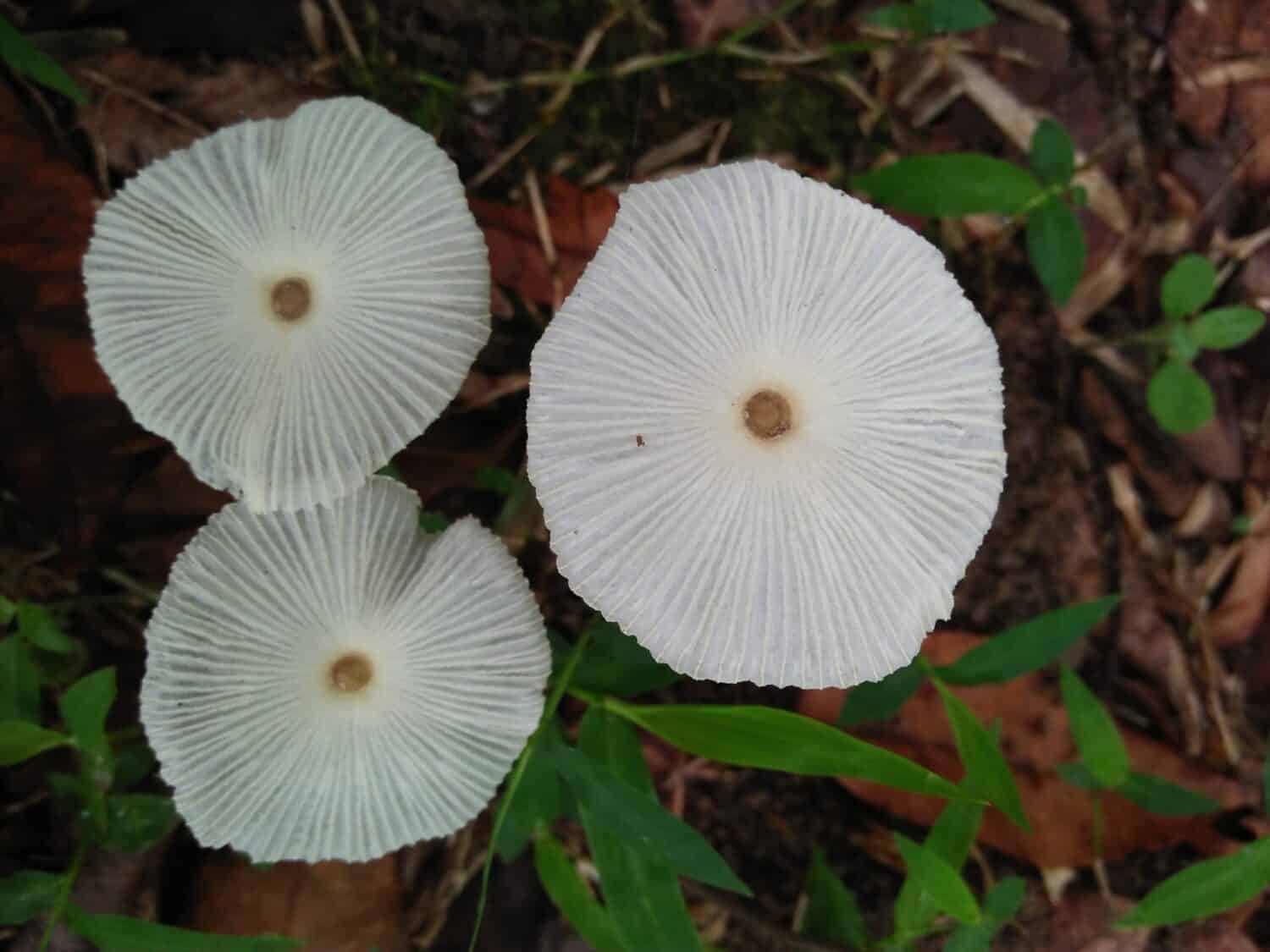
This mushroom lives up to it’s fragile epithet. Just like a delicate flower.
©Rindi Laras Wati/Shutterstock.com
The photo featured at the top of this post is © faisal alias/Shutterstock.com
The information presented on or through the Website is made available solely for general informational purposes. We do not warrant the accuracy, completeness, or usefulness of this information. Any reliance you place on such information is strictly at your own risk. We disclaim all liability and responsibility arising from any reliance placed on such materials by you or any other visitor to the Website, or by anyone who may be informed of any of its contents. None of the statements or claims on the Website should be taken as medical advice, health advice, or as confirmation that a plant, fungus, or other item is safe for consumption or will provide any health benefits. Anyone considering the health benefits of particular plant, fungus, or other item should first consult with a doctor or other medical professional. The statements made within this Website have not been evaluated by the Food and Drug Administration. These statements are not intended to diagnose, treat, cure or prevent any disease.
Thank you for reading! Have some feedback for us? Contact the AZ Animals editorial team.



